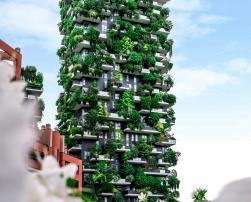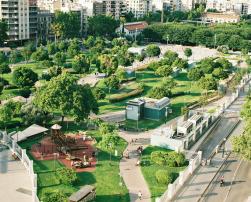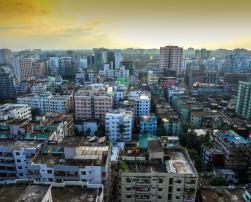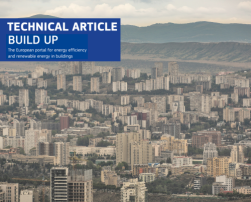
The REHVA Manifesto garnered endorsements from European candidates, highlighting its vision for a sustainable Europe and commitment to influencing EU legislation.

The REHVA Manifesto garnered endorsements from European candidates, highlighting its vision for a sustainable Europe and commitment to influencing EU legislation.

A new study assesses the social impact and financial return of integrating digital solutions with Urban Green Spaces for climate adaptation, revealing a twofold social return on investment in a European project.

Natural ventilation is crucial for public health in Bangladesh's urban areas, where high-rise buildings and congested alleys often neglect its benefits, despite rising concerns over respiratory and mental well-being, exacerbated by reliance on air conditioners and limited ventilation in modern urban flats.

The Green Deal ARV project aims to demonstrate and validate attractive, resilient, and affordable solutions that significantly speed-up deep energy renovations in four different climatic zones in Europe and deployment of energy and climate measures in the construction and energy industries.

Air conditioning use in Europe has risen significantly due to climate change, posing environmental challenges despite its essential role in heatwave mitigation. What are the possible solutions?
The Research Centre on Zero Emission Neighbourhoods (ZEN) in Smart Cities create solutions for the zero emission buildings and neighbourhoods of the future as a contribution to a low carbon society.

Professor Bartlett reports efforts from the cool towns project to develop heat resilience strategies across European cities, focusing on scalable interventions like shade, water features, special paving, green walls, and urban planning to mitigate the impacts of rising temperatures and support climate adaptation.

This white paper aims at supporting the definition of research and development strategies on sustainable material-based solutions for energy efficient buildings with a 2030 horizon (the same set by the revised Energy Performance of Buildings Directive to achieve at least a 55% reduction in greenhouse gas emissions, as legally required under the 2021 European Climate Law).

The second Study Tour of the Implementation Working Group on Energy Efficiency in Buildings (IWG5) will take place in Brussels, Belgium, on 2 July 2024.

The renovation wave requires an integrated, participatory, and neighbourhood-specific approach that is customised to the local environment. A digital tool called RESTO (Renovation Strategy Tool) has been developed to help local municipalities automate calculations for comprehensive renovation strategies, by utilising public databases at the neighbourhood level.